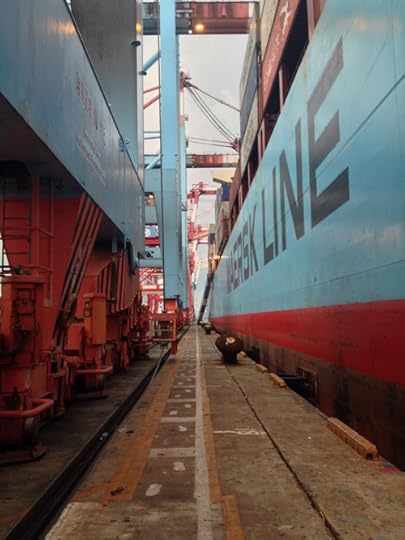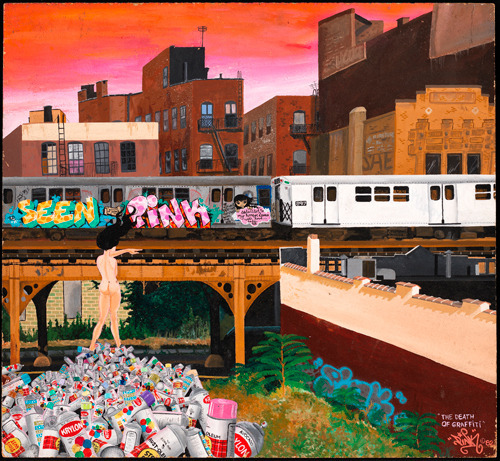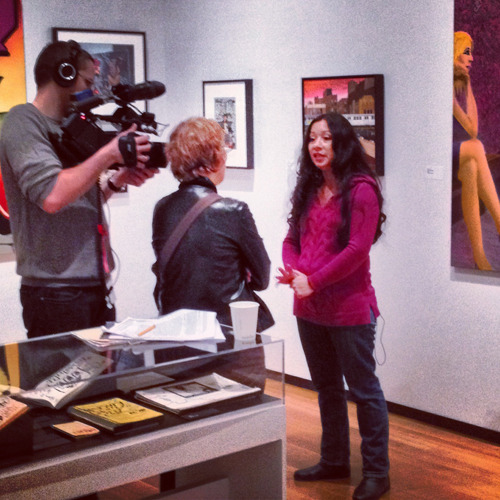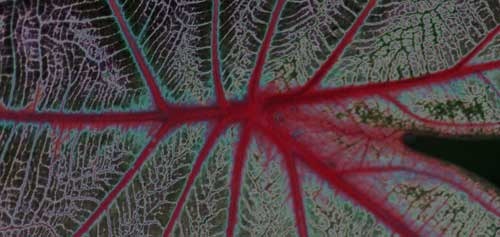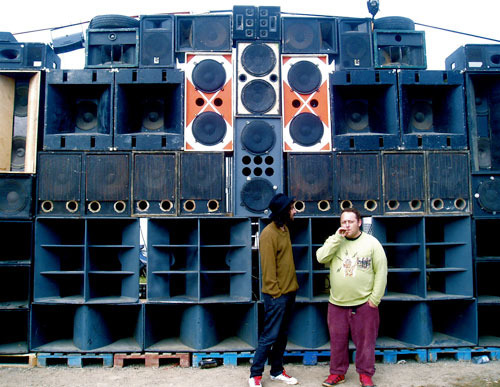Tim Maughan's Blog
March 1, 2015
“The shadow cast by the luminous screen…” – an interview with Liam Young
The fascinating new book from Sonic Acts, The Geologic Imagination, is out now – and features my interview with Liam Young, conducted whilst we were deep at sea on a container ship last summer. Here’s a little taster:
TM: First, I’ve been impressed by the scale of everything. It’s the 45th anniversary of the Moon landing, right? I keep hearing people saying that we don’t do any big engineering projects anymore; we don’t go to the Moon anymore. The truth is we do, we just don’t see it. It’s moonshot-scale engineering to solve the problem of one country selling things to another country. Secondly, I’m horrified by the obvious environmental impact. Thirdly, I find myself going, ‘I wish I had a better camera. I wish I had a better phone, as I keep running out of space on the one I’ve got. I wish I had a GoPro because they look like fun. I wish I’d brought a digital SLR. I wish I had a MacBook Air; I could’ve brought it with me, because it’s lighter’. Do you know what I mean?
LY: Yes. Our generation had no great war to fight. Our generational project was the acquisition of wealth and objects. We’ve gone about that with exactly the same fervour as soldiers went into the Great War. We’ve invented technologies. We’ve created systems. It’s all about globalised production, which is about outsourcing labour and maximising costs and beneficences. We’ve ended up creating this super-scale planetary infrastructural system, which is so big that it ceases to be visible. That’s our great work. It is amazing. What this does is really quite incredible. At the moment, the system is engineered purely for efficiency and profit. But you could imagine co-opting the same system to do other things.
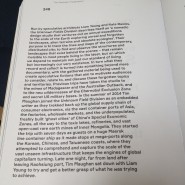
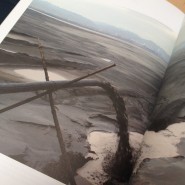
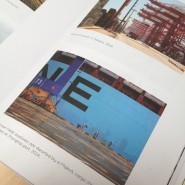
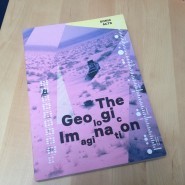
TM: It could feed people, I guess.
LY: It could feed people, yes, but I think what we’ll see in the next phase, is what outsourcing production really does. An economist would argue that this system distributes wealth, and that distributed production means that someone who would otherwise be working in a little village – on a farm, on subsistence – now has a job in a factory and is making enough money to live in the city, and also sends money back home to the family in the village. To a certain extent that could be productive. They can be paid much more than they were before. Still, someone is taking a massively unfair cut of that process. You can imagine engineering the supply chain of a particular object to really redistribute wealth globally. Let’s say that I’m going to make a computer, and that computer consists of components that are produced in 50 countries around the world. All these components come together via the infrastructural network. This one computer is a world object – through this object we’re connecting all these disparate communities all over the planet, and we’re distributing wealth. If you engineer it for those ends, you don’t engineer it because labour costs in Bangladesh are way lower than in India. (China is outsourcing to Africa now. China is slowly moving up the tier, from being a manufacturing nation they become a management nation.) There must be ways to make this infrastructure work in fairer ways for everyone. It’s naïve to say we will go back to only consuming local food, and all that. It’s naïve to think we will grow crops on our roofs and manufacture locally, like these co-op movements do that are popping up in San Francisco.
The invisible network that keeps the world running
Over at the BBC, the week I spent on a huge Maersk container ship:
“Over the course of seven days there wasn’t a single time when I stood on the bridge of the Seletar, even when deep at sea, that I couldn’t look out and see other container ships, and a brief scan of the horizon with binoculars would usually reveal four or five more. The implications are even more startling when nearing a port, and seeing dozens of vast ships held at anchorage, lined up like trucks in a parking lot. The sea has become dominated by GPS tracking and autopiloted navigation, where the shipping routes are more than just vague geographical gestures, but instead precise spaces traced out both by computerised charts and physical markers, with deep sea buoys marking lanes like the painted lines on road surfaces.”
(Photos courtesy of Liam Young, Kate Davis and the Unknown Fields team)
December 30, 2014
Merry Christmas from China: new fiction and non-fiction
Finally up: my report for the BBC on Yiwu, China’s plastic city where Christmas is made and sold:
‘In the next room the fabric products are made; again about two dozen women sit at rows of sewing machines. It’s hot and all you can hear is the constant hum of the machines as they stitch together hats, Christmas stockings, and festive bunting. The red and white Santa hat – the kind you wear at office parties – that you buy for a few pounds and then throw away by New Year’s Eve. I see it being made here. I watch a girl sew white fur trim on to red felt at the rate of about two hats a minute, and as she finishes each one she simply pushes them off the front of her desk where they fall, silently, onto an ever increasing pile on the floor.’
I also wrote a fictional take on the same themes, a little Christmas Tale for Motherboard’s Terraform:
‘Ming-hua takes a Santa Claus from the conveyor belt, holds its feet between thumb and forefinger, and blushes its cheeks red with two delicate taps from a paintbrush. As always, she tries to avoid its dead-eyed gaze, but before the second dab of paint it’s laughing at her, hidden servos shaking is head from side to side in simulated cheer.
Ho ho ho! Merry Christmas Ming-hua!
She drops the Santa on the pile next to her table and they celebrate the arrival of yet another of their kind, 300 Santas ho ho ho ho-ing and vibrating as one.
Two tables up the line Yanyu, who paints the pupils onto their dead eyes, is wearing a plastic mask while she works. This week it’s Kermit the Frog; last week it was Pikachu. Before that, a Teenage Mutant Ninja Turtle. It stops the Santas from scanning her face and searching the social networks for her name. It means they keep fucking quiet. The masks have to be animals or cartoon characters—no real people or celebrities.
Ming-hua tried it, for a while. She hid behind Spider Man’s face. But it got too hot, the sweat from her brow stinging her eyes, the smell of the plastic as suffocating as the fumes from the injection-moulding machines clanking and pounding in the corner. She decided she was better off putting up with the ho ho ho-ing.’
November 22, 2014
Your Gaze – New fiction for Saturated Space
The Architecture Association’s Saturated Space project asked me to write something about colour.
Originally conceived by imagining what the world might look like if we could apply Instagram style colour filters to reality, ‘Your gaze, brought to you by our sponsors’ ended up being an exploration of how digital palettes alienate us from the true colours of reality, how the male gaze shades virtual worlds, and how social media has made us all the content between advertisements.
Extract below:
flick
Filter: Wild Style
sponsored by Adidas
The sun sprays golden light through white cloud stencils, ricocheting into gunshot paint splatter as it falls on brick and tarmac. Where it hits the ground it threatens to bounce away – the pulsating, litter-strewn sidewalks vibrating in time to deep sub-bass hits, distorting the air in front of you into ever shifting sound-wave patterns. A rainbow convoy of jeeps and SUVs crawl past, the sampled breaks and megaton-heavy drum machine rumbles booming from their hyper-polished shells, making even the skyscrapers shake, tenement building fronts awash with aerosol graffiti, a never ending urban gallery of a myriad shades. Words and pictures, names and faces, breeze-block textures soaked with vibrancy. On their peaks hijacked billboards nestle under tag-drenched water towers, broadcasting the urban uprising of illegal colours over corporate logos like pirate radio stations shifting their transmissions into the visible spectrum. The felt-pen scrawled finger of a road sign gantry arcs over your head, suspending street names associated with authenticity and hard-knock lives in text that you struggle to make out through the mosaic shards of multi-layered stickers.
You glance over at the woman next to you at the bus stop, thrilling in the pristine freshness of her threads, and awe at the bold blocks of colour, how the green/brown camouflage patchwork of her Adidas OriginalsTM tracksuit matches the trim of her boxfresh white Adidas Stan SmithTM sneakers, how the silk of the suit’s patented Three StripeTM piping mirrors the gold circles of her oversized hoop earrings. How it all compliments perfectly her warm, dark skin, her head nodding with effortless style to the landscape distorting beats, so flawlessly bold that it looks like she’s freshly daubed art, like she’s been ripped from the walls around you. Slowly, with measured, deliberate precision she turns to face you, and with dismissive screw-face her gaze meets yours, and you feel the hot flush of guilt as-
flick

Liam Young: interview
I recently finished editing an interview I did with Unknown Field’s Liam Young while we were on a container ship heading to China back in July. The interview is going to be published by Sonic Acts (lovely smart Dutch people) in a book about the anthropocene next year, and I had to get 7000 words of transcribed text down to about 2500. Here’s a little snippet from the stuff that didn’t make the cut.
Liam: Because like I was saying, it is quite extraordinary, like I was talking about the technological sublime. We see it in all these places we go to, we stand at the world’s largest gold mine, it’s a hole in the ground the size of the Grand Canyon, so big it generates its own weather system and planes have to divert around it otherwise they’re sucked into the wind vortex that it creates. We’ve done this…we’ve built the machines that have dug this fucking hole.
People travel from all over the world to go and see the Grand Canyon, to go to this fucking hole in the ground. It’s the same kind of thing, it’s actually more impressive because that took millions of years of wind and rain and erosion to create it and we did this in 15 years ‑ that’s pretty amazing.
So we used to paint the sublime which was about the fear and order of nature, and now we have the technological sublime where we approach the same kind of landscapes, we have the same kind of feelings about technological and industrial landscapes that we once did looking across the savanna, or looking across the grand canyon, or standing on a peak and seeing the amazon jungle unfolding in front of us. We stand underneath of a crane in a mega-port and we have that same sense of awe and wonder.
Tim: I was standing on the bridge, and the lights on one of them suddenly fired up and it slowly passed over me…a dozen little suns beaming on me, bringing daylight to the night.
Liam: And you get fucking goose bumps, you know what I mean? Like the artificial night when you see a factory on the horizon…it creates this strange kind of synthetic aurora and it’s desolate ‑ it’s utterly seductive. That’s our era’s great art…people used to do the Nazca Lines and we go to the oil pipelines.
Tim: That’s funny you say that because I went to Machu Picchu back in April, and it was fantastic. And then a few weeks later I went to Detroit. And that was fantastic too. And they both seemed strangely similar to me. And I couldn’t quite decide which impressed me more.
Liam: [laughs]
Tim: And they’re two of the same things, right?
Liam: Yeah. Two ruins of a civilisation.

October 20, 2014
‘New City’ premieres at Future Fictions Exhibition
Over at Tomorrow’s Thoughts Today, Liam Young explains our ‘New City’ art installation for the Future Fictions show in Belgium:
“Opening on October 4th at Z33 in Belgium, Future Fictions. Perspectives on worldbuilding explores how contemporary artists, designers and architects relate to future thinking and imaging: from mapping, questioning and criticizing, to developing complex visions about the structures and systems that may shape our life in the future. Tomorrows Thoughts Today’s Liam Young will première a 3 screen projection work ‘New City’, a series of near future city skylines. New City is a collaboration with the authors Jeff Noon, Pat Cadigan and Tim Maughan and musicians Coldcut.”
(Yeah, you read that right. Coldcut.)
“New City is a series of animated skylines of the near future…in intricate 5k detail they depict a speculative urbanism, an exaggerated version of the present, in which we can project new cultural trends, environmental, political and economic forces. Photographs taken on expeditions around the world documenting these emerging phenomena and weak signals have been meticulously stitched together and extrapolated to form each city skyline. In this way ‘New City’ slips between the real and the imagined, between the documentary and the visionary, where speculative fictions become a way of exploring a world that the everyday struggles to grasp.”
You can read the full texts and watch snippets of all three animations over at TTT, plus I’ve posted the one I worked on below. ‘Keeping Up Appearances’ was inspired by the expedition to Korea and China I took with Liam and his Unknown Fields Division crew over the summer (a lot more on which will follow soon, watch this space), specifically a combination of the hyper-saturated, high rise cities that are growing out of the ground across the country, and the corporate logo branded tower blocks that dominate the skylines of South Korean cities like Busan.
New City: Keeping Up Appearences from liam young on Vimeo.
Duri drops the Samsung Galaxy SX phone onto the kitchen table, hears it chime softly as it makes contact with the paper-thin Samsung Qi SmartPower charging mat.
-Honey, what’s that cardboard tube in the hallway?
Sang’s voice comes back from the lounge, muffled by the low hum of the Samsung AHT24WGMEA/XSG air conditioner.
-That’s the TV, come and see-
-What?
-It’s the packaging the new TV came in. I’ve just hung it. Come in here and see!
Duri pushes open the door to an explosion of pixels the width of the room; an ultra high def orgy of thrown paint and 4K rainbow ejaculate soiling pristine whitespace. White turns to black, paint to fireworks, stars flicker and become city lights, a forest of pastel shaded, corporate branded condo-blocks emerging from the night, as the final strains of the orchestral score fade into the air-con’s never ending drone.
Sang waits until the TV’s start-up and calibration routine has finished before turning to Duri, idiotic childish glee filling approval-seeking eyes.
-Nice, huh?
-Yeah. It’s great. But why does it say LG on it?
[beat]
-Because… it’s made by LG?
-Move it. Now.
Sang looks confused, almost hurt.
-The TV?
-The packaging first. Get it out of the hallway. Bring it in here. Now.
-What? But they’re coming to get the recycling tonight-
-Exactly. Get it in here before anybody sees it.
Duri curses silently for trusting Sang with such an important consumer decision, anxiously glancing at the feed from the hallway’s Samsung SND-6011R dome camera via a Samsung SmartGear 7 Neo wristwatch.
-Christ, who knows who’s seen it already… I just hope nobody from the building standards committee is back from work yet…
-Baby…
-Don’t baby me. Are you trying to get us thrown out? Our lease is up for review in three months and you brought an LG TV into a Samsung housing block? What the hell will the neighbours say?

June 11, 2014
Drones, cities, graffiti: New fiction. And Non Fiction.
Last few months have been busy, hence the lack of posts here. Time for a quick round up…
First up: new fiction. Arc 2.2 has my short story Ghost Hardware, a sort-of-kinda-almost sequel to Paintwork, it’s a story about augmented reality, architecture and drone graffiti. You can read a couple of extracts from it over at Arc’s website, where I’m also moaning about how reality keeps catching up with my predictions.
There’s more fiction by me in the form of Up and Coming, a short story in Brave New Now; a new anthology featuring work from the likes of Bruce Sterling, Warren Ellis, Jonathon Dotse and Rachel Armstrong. Brave New Now is ‘a collection of specially commissioned short stories set in a fictional future city developed by speculative architect Liam Young for the 2013 Lisbon Architecture Triennale. Authors have been invited to inhabit the city, to breathe life into its characters and cultures and give form to its streets and spaces through narrative. It is a speculative urbanism, an exaggerated present, in which we can imagine the wonders and possibilities of emerging biological and technological research.’ You can grab it as an ebook from Amazon and iTunes now.
Liam Young was also kind enough to invite me over to Princeton’s School of Architecture in April to speak at his excellent two day Data Drama event. There’s some video up here, plus you can read my report on the whole thing over at Arc.
Also at Arc: what do Robocop, the Robocop remake and Alphaville all have in common? They’re all strangely prescient predictions of how ‘smart city’ hype could lead to urban nightmares. Or, at least two of them are.
I’m also very proud to be able to reveal what I’m working on at the moment – a very exciting project alongside the so-talented-it’s-a-bit-scary Superflux for the London Design Festival – a drone aviary exhibit for the Victoria and Albert museum. Just go look at how crazy-exciting this is.
And finally – some of you might remember way back in the heady days of January 2013 I was invited to talk at the Sonic Acts festival in Amsterdam about graffiti and technology? No? Yeah, well I was, alongside Simon Ings, Alastair Reynolds and Frank Swain. You can watch us all – and laugh at how funny I look without a beard – right here on the Sonic Acts website.

February 17, 2014
“This is what the police do. They oppress artists” – interview with Lady Pink
Just published over on Futures Exchange is my article ‘Graffiti: 40 Years of Hacking New York City’, a look at the history of street art where I compare graf’s ethos and its role in urban protest to that of the computer hacker. It was mainly inspired by a visit to the press preview of The Museum of New York City’s City as Canvas exhibit, where I was lucky enough to get to talk to a few bona fide legends of the NYC graffiti movement, and in particular Lady Pink, who told me about her recent experiences being raided by NYPD – more than two decades after committing any acts that could be legally described as vandalism.
There was far too much from that interview to include it all in the article, so what follows is a full transcript of the chat. It starts just as I’m asking her if she’s okay with me recording her, and the third person in the conversation is my partner-in -crime sava. Enjoy.
Tim Maughan: Sorry, you don’t mind, do you?
Lady Pink: No, yeah, I don’t mind. so the Vandal Squad actually came into my house, the SWAT team truck outside, my neighbors coming out to look, I’m like “oh ho ho”. So I’m not under arrest, I’ve not been charged, but they still took all my stuff, my computers, my published books out of my book case, a 100 books, as well as all my photos, my everything, So all my life’s work walked out the door. My computers, which meant my jobs, my contacts, my contracts, sales, opportunities, travel, everything walked out the door. I couldn’t reach anyone, I couldn’t… they basically fucked me. And my husband still has an open case! You still have to defend yourself, even if you’re innocent. You still have to go to court, hire and expensive lawyer, and prove that you’re innocent, and when that’s all over, then they’ll give me back my stuff.
T: So how long ago was this?
LP: In May.
T: In May?!
LP: In May.
T: Are you still writing on walls?
LP: Of course not. I have not broken the law in a couple of decades!
T: So why now?
LP: Because this is what the police do. They oppress artists. So yes, we’re accepted *here* [at the gallery], but nevertheless, if any of us idiots have the nerve to organize an event, do a public function, or in any way show that you are prospering and profiting from that, then they’ll get the police – they’ll raid your house and they’ll get your stuff and do fishing – try to find some kind of crimes or something something. So when they take in my husband, charged him with graffiti, and they say, “yes we seized 800 cans of spray paint from the house” it sounds bad! But then when you say the wife is a professional muralist and a respected artist and such, then it’s perfectly legitimate, but nevertheless they still have all my stuff.
And so what happened with that, 3 months ago I moved out of the city, I live upstate now. a couple of hours away from this. I came in yesterday to be here for all you people, because I live far away now. The Vandal Squad doesn’t have jurisdiction upstate, so they can’t move. and this is the second time they got into my house. they did this to me ten years ago. I have a beautiful house in queens. We don’t break the law. and my husband, for the past few years, had been a train operator, driving subway trains, with no time to scratch his belly button, much less do any trouble or anything, but this is what they police want, for him to lose his job, to fuck me over as a professional artist, and to make me… question… it’s hard enough to be an artist, why do I bother? Why don’t I just let the police win, fuck it. But you know, I have responsibilities, I have exhibits, I have… I’m a role model for young people, I have a following, I can’t stop! But the police are making it very very hard so I had to buy a house upstate, and I live in the country – outside my windows looks just like this [snowy central park]. It’s just nothing but forest. I don’t see people, I don’t see nothing.
T: Are you going to be ok getting back?
LP: Well my husband’s coming for the opening tonight, so we should be able to drive back tonight. They clean the city streets pretty well. It’s upstate I worry.
sava: It’s weird that they’ve come after you decades after you’ve done this stuff… I don’t understand that… I don’t understand the logic behind that.
LP: Because we’re in the public eye and we have the nerve to profit from what we do and they just can’t stand it, so they got nothing better to do than to take down a couple of high profile artists. And they’ve done this to other people who have organized things, so we’re not the only ones. They get into your house and do fishing, try to find something something that’s in there, even some old photos that’s inside your camera that, you know, that shows anything. But there’s nothing in my house for them to have found and charged anything, you know. But still. It’s just terrifying the police are… that they’re thugs, that they have that kind of power and we have no control, no way to stop them from doing whatever they want to do. We’re just artists, so…
S: do you know if you’re going to get your stuff back?
LP: When the case is over, they’re supposed to give it all back. But the truth of it is, that they don’t give it all back. They keep whatever they want to keep. And give you back what they want to give back. So other people who had their stuff seized and when they took my stuff ten years ago, I only got back like maybe 90% of it. They kept some memorabilia, some antique subway signs, and stuff like that. And now I don’t know what they could possibly keep, you know. I had to sit there with a police lady on my sofa and watch those people walk out the door with all my paint, all my books, all my photos, computers… pshew, everything out, everything gone.
T: They’ve still got the computers?
LP: Yes, yes! They still have all our stuff, and, but I do have a brilliant brilliant attorney… she’s expensive, but she’s the best, the best that there is. And she’ll make this thing go away.
T: That’s still… that’s disgusting.
LP: That they can do this, right?
S: You should invite them to this!
LP: I don’t doubt the vandal squad will be here tomorrow night. I mean it’s the public opening and all the little graffiti writers and riffraff…
T: They wouldn’t pick anybody up…
LP: They’ve picked people up at their own gallery openings. They’ll pick people up. They’ll say, “oh we have a photo of some wall… that we’re not so sure if it was legal. and you come with us.” They’re gallery openings! So yes, they’re going to be out here like vultures. circling circling. maybe they see somebody you know… even around the block because the kids on their way here, from the subway. Even at 5 points there was a perfectly legal place to paint…
T: We got down there like three days before they white washed it all.
LP: So the vandal squad will go around and around and around and wait for somebody that’s painting on the wall, to go down like this and go “ts ts” on the sidewalk? that’s it. handcuffs. You’re going down. Because the building is permission, but the sidewalk belongs to the city. You ain’t got permission to paint that! So… they do that. like I said, vultures… circle, circle, wait for someone to slip up.
T: That’s the only good thing… it’s the one thing that’s come out of Banksy back home is now it’s kind of legit. The police don’t do that. They do and they don’t. But because of Banksy, it’s kind of like, ah it’s art now so… yeah, I know, we all feel the same about Banksy, but… he’s kind of… I haven’t heard of anything like that going on for a while now back home… but wow man, seriously.
LP: No, I like Banksy. I like what he’s done, what he stands for and… um… where he’s brought us. The legitimacy. there’s towns and villages and places where they’re like, “alright! cool!” and that is priceless, what he has done. So… whoever he might be, whatever… I love it. I just love it. I know other people have problems with Banksy and all of that, but I think it’s all good. Because there are many other riffraff that we’ve exhibited with that just completely destroy and fuck it up for us. So that places never have us back because some guys misbehaved and that is a given, some of these guys are riffraff from the ghetto and don’t know how to behave properly and don’t care if they drag us all down with them, so that Banksy can put us in the positive light is a plus, right? And a bunch of homeboys wrecking up some hotel and tagging up in front of everything, you know, that’s not good, so can’t argue with that… and the amount of money that he’s commanding? It rubs off on us all.
T: I hope so, I hope so.
LP: Yes. Yes. We do sell our paintings in the 5 and 6 figures.
T: Right ok. ok that’s good to know.
LP: Yeah. So yeah. We do well. And how the police hate that.
T: Yeah, Yeah, I bet.
S: How does it feel to kind of get together… do you keep in touch with all the people?
LP: No, we see each other all the time. I stuck with these guys forever.
S: Ok, so it’s fun to kind of hang out together and do this…
LP: Two of them are my exes, and one of them is my sister’s ex. That movie Wild Style was written about the actual love story between me and Lee. we dated for four years, a very stormy relationship but they’re… strong personalities, didn’t quite… but we’ve always exhibited together, and we’ve had to get over it and just become friends and such. I even had Lee’s son work on one of my mural projects with they other children and stuff. I’m like why doesn’t he paint with you? Yeah. Why’re you giving him to me? I do well with kids, so.
S: Your husband?
LP: He’s also a graffiti artist, but he’s from a different generation. The generation after me. I quit it in ’85, he started in ’85.
S: Is that how you met? through…
LP: Not back then. we met in ’93, um… to make a long story short, I had a couple of really cute european kids staying with me – all of 19-20 year olds – they wanted to paint subway trains really really bad. and all I knew was the civilized guys and nice places like this. Honestly, after so many years, I didn’t know where to go paint a train safely. You gotta be safe. So I had to dig up the last die-hard painter who did subway trains and I found, I dug up my husband. He agreed to take these young kids to do a train, only if I came along. And I was like “I’m too old to go, I haven’t run from the police in so many years, that’s not my thing!” But I didn’t want the kids to be disappointed, so I went along. We’re painting a subway train, and we got raided by the police and we had to run! And I had initially said I’m not going running, I’m too old, I’m staying here and getting arrested, you guys go ahead. But when I saw them running, my friends were already gone, I took off as well, and we did escape, we got away. We got split up and he thought he lost me and stuff, and I think that raid, we fell in love and stuff. And it was cool. So he was always more of a vandal and bad boy of graffiti, and I was the good girl artist type. So we got together, I turned him more into… brought out, nurtured the art in him, because he had a lot of talent.
T: Is he still working now? Is he still writing?
LP: Not illegally, certainly not. He’s my executive assistant, he helps me with all my work, mostly the administrative stuff but as well as the painting. With a man in tow, I can do bigger work and with a white guy in tow, I command higher prices. That’s just the way… it’s still a white man’s world, unfortunately. So your blue eyes will command a lot more money, and you’ll get a lot more respect than just being a female. You gotta play that game because that’s the way it is. So easily I push… he’s a very quiet man, but I push him forward, “speak! you ask for $10,000, because you’re going to get it.”
T: This sounds really familiar.
LP: We have to balance each other and work as partners in order to succeed in this world. As a little female I always get “you can’t paint that, little girl! that’s so big!” but with a man in tow, they won’t say that… and that’s just sexism. We paint a lot of high-end businesses, in the construction world. A female in the construction world it’s a little… unusual. That’s what we have to do: play the game.

December 16, 2013
Collision Detection and Zero Hours – new fiction for Futures Exchange
Just published today is the latest bit of short fiction for me – Collision Detection up on Medium’s Futures Exchange, a slightly twisted tale of long distance love between sea-standing, wannabe-transhuman, neoreactionaries. Make of it what you will.
It’s actually the second piece I’ve written for Futures Exchange (and hopefully won’t be the last, stay tuned over the following months) – back in September they published my very short piece Zero Hours, about freelance retail workers trying to stay afloat in near future London. The piece actually came about as part of my consultancy work on the Arup, Social Life, Re.Work, Commonplace, and Nesta organised Future Londoners project; a one day workshop that looked to explore the city’s possible futures by creating 10 fictitious citizens. Zero Hours had a great response when it was released, so I’d just like to thank everybody (and there really were lots of you) that gave it a read. Cheers!

August 24, 2013
Listen to Limited Edition
Back again with some more quick updates…
First off: I am very honoured to announce that the legendary podcast StarShipSofa has put out a fantastic reading of my Short story Limited Edition. Many, many thanks to Tony and Adam for putting it together, and in particular to Graeme Dunlop for his superb narration, especially as it’s some pretty tough source material. Get over there and check it out.
Elsewhere on the net, Philip Bates has followed up the great interview he did with me for Guide2Bristol with a post on his own blog – well worth a read, and thanks again Phil.
This also happened last month: I somehow ended up in the SFX Magazine Hot 50, two places ahead of that guy that said ‘mewling quim’ in that awful Avengers movie:
I try not to take these things too seriously, but it was pretty faltering and exciting, I’ll admit.
Right, back to novel writing. I will return next week with some news about upcoming events…







